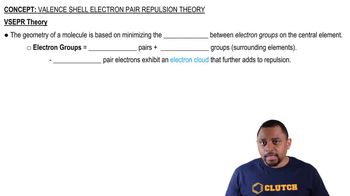The highest occupied molecular orbital of a molecule is abbreviated as the HOMO. The lowest unoccupied molecular orbital in a molecule is called the LUMO. Experimentally, one can measure the difference in energy between the HOMO and LUMO by taking the electronic absorption (UV-visible) spectrum of the molecule. Peaks in the electronic absorption spectrum can be labeled as π2p-π2p*, σs-σ2s*, and so on, corresponding to electrons being promoted from one orbital to another. The HOMO-LUMO transition corresponds to molecules going from their ground state to their first excited state. (c) The electronic absorption spectrum of the N2 molecule has the lowest energy peak at 170 nm. To what orbital transition does this correspond?
One of the molecular orbitals of the H2- ion is sketched below: (d) Compared to the H¬H bond in H2, the H¬H bond in H2- is expected to be which of the following: (i) Shorter and stronger, (ii) longer and stronger, (iii) shorter and weaker, (iv) longer and weaker, or (v) the same length and strength?
 Verified step by step guidance
Verified step by step guidance
Verified video answer for a similar problem:
Key Concepts
Molecular Orbitals

Bond Length and Strength

Electron Repulsion

One of the molecular orbitals of the H2- ion is sketched below:
(a) Is the molecular orbital a s or p MO? Is it bonding or antibonding?
Place the following molecules and ions in order from smallest to largest bond order: N22+, He2+, Cl2 H2-, O22-.
Azo dyes are organic dyes that are used for many applications, such as the coloring of fabrics. Many azo dyes are derivatives of the organic substance azobenzene, C12H10N2. A closely related substance is hydrazobenzene, C12H12N2. The Lewis structures of these two substances are
(Recall the shorthand notation used for benzene.) (b) How many unhybridized atomic orbitals are there on the N and the C atoms in each of the substances? How many unhybridized atomic orbitals are there on the N and the C atoms in hydrazobenzene?
